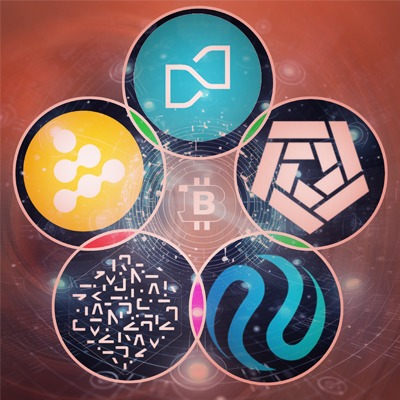Quantum Bitcoin Mining: The Future of Cryptocurrency?
Jul. 31, 2024.
5 mins. read.
12 Interactions
Quantum computing promises to revolutionize Bitcoin mining, offering unparalleled efficiency through Grover's algorithm. While still years away, these advancements could reshape the future of cryptocurrency mining.
Spoiler Introduction
Ah, the apocalyptic headlines: “Quantum computers will break the blockchain and destroy Bitcoin!” But fear not, dear readers, for we’re not quite there yet. In fact, we’re still a ways off from having the necessary 4 million qubits to pose a real threat to the blockchain. So, let’s take a deep breath and explore a more exciting application of quantum computers: Quantum Bitcoin mining.
What’s Bitcoin Mining, Anyway?
Before we dive into the quantum stuff, let’s cover the basics. Bitcoin is a digital currency that uses classical cryptographic technologies to secure transactions. The blockchain is a public ledger that stores all these transactions, divided into blocks. Miners compete to solve complex mathematical problems to validate these blocks and add them to the chain. It’s a bit like solving a giant puzzle, but with more computers and less actual puzzle pieces.
The Blockchain: A Chain of Blocks
Think of a blockchain as a chain of blocks, each one connected to and affecting the others, sharing the weight. Each block contains a list of transactions. When a new transaction occurs, it’s broadcast to the entire network. Miners collect these transactions into a block and add this block to the blockchain. Each block references the previous one, creating a secure and chronological order of transactions. This setup ensures that once a block is added, it’s incredibly difficult to alter the information without changing all subsequent blocks, providing the security and immutability that blockchain technology is known for.
Nonces and Hash Functions: The Key to Mining
The key aspects of Bitcoin mining are nonces and hash functions.
- Nonces: These are arbitrary numbers that miners tweak to find a hash value that meets the target difficulty. Imagine nonces as the secret ingredient in your grandma’s cookie recipe that you keep adjusting until the cookies come out perfect.
- Hash Function (SHA-256): This function takes an input and generates a 256-bit output. No matter how many times you input the same data, the output will always be the same. However, even a tiny change in the input will produce a vastly different output. It’s a bit like a magical blender where putting in different fruits always gives you a unique smoothie, but you can’t reverse-engineer the smoothie to get back the original fruits.
The Goal: Finding the Right Nonce
Miners aim to find a nonce that, when combined with the data in the block and passed through the hash function, produces a hash that meets a certain target – usually a hash with a specific number of leading zeros (PoW). This process is like playing a massive game of slot machines, where you pull the lever (change the nonce) over and over, hoping to hit the jackpot (the correct hash value).
Classical Mining: A Computational Nightmare
In classical mining, miners iterate through a massive search space to find the right combination of nonce values that satisfy the proof-of-work conditions. This is a computationally costly problem, which is why miners use high-powered machines specifically designed for this task. The total complexity of this operation is a whopping O(2^256/t), where t is the time it takes to perform the calculation. Imagine trying to find a needle in a haystack, where each strand of hay represents a possible nonce. Now imagine that haystack is the size of the sun – that’s the scale miners are working with!

Enter Quantum Algorithms
This is where quantum computers come in. Quantum algorithms like Grover’s algorithm can search this vast space much faster, thanks to the power of superposition and parallel processing.
Quantum Superposition and Parallelism
Quantum computers leverage superposition, where qubits can exist in multiple states simultaneously. This is unlike classical bits, which are strictly either 0 or 1. It’s as if you could be in multiple places at once, doing multiple tasks. This allows quantum computers to process a vast number of possibilities simultaneously, rather than sequentially as classical computers do.
Grover’s Algorithm
Grover’s algorithm is a quantum algorithm that provides a quadratic speedup for unstructured search problems. In the context of Bitcoin mining, it can theoretically reduce the time needed to find the right nonce significantly. Instead of searching through all possible nonces one by one, Grover’s algorithm allows us to find the correct one in roughly the square root of the number of possibilities.

The Reward: New Bitcoin
Assuming we find the right nonce, what happens next? When a miner successfully solves the puzzle, they broadcast the block to the network, and other miners verify the solution. The winning miner is rewarded with new Bitcoin (currently 3.125BTC per block as of April, 2024), plus transaction fees from the transactions included in the block. This reward system incentivizes miners to keep participating and securing the network.
The Current State of Quantum Bitcoin Mining
So, where are we now? The short-term impact of quantum computers on Bitcoin is likely to be minimal. For quantum mining, we need extremely fast quantum hash rates, which are still a ways off.
Quantum Hardware Limitations
Quantum computers are still in their infancy. Current quantum computers, like those developed by Google and IBM, have achieved around 100 qubits. However, to outperform classical miners and pose any significant impact on Bitcoin mining, we would need millions of qubits, operating with low error rates. This level of quantum hardware is still many years, if not decades, away.
Potential Vulnerabilities
There is a vulnerability in pending transactions due to elliptical curve cryptography, which is used in Bitcoin’s public key infrastructure. Quantum computers could theoretically break this cryptography, allowing them to alter transactions before they are confirmed. However, the Bitcoin community is already aware of this and is researching quantum-resistant cryptographic algorithms to mitigate this risk.
Stability and Adoption
The mere possibility of quantum computers existing could potentially destabilize Bitcoin. Investors might be wary of the security implications, and this uncertainty could affect Bitcoin’s value. However, until quantum computers are practically feasible and scalable, this remains a theoretical concern rather than an immediate threat.
Conclusion
In conclusion, Quantum Bitcoin mining is an exciting development that could revolutionize the way we mine cryptocurrency. While we’re not quite there yet, the potential benefits are undeniable. With the right quantum algorithms and hardware, we could see a significant increase in mining efficiency. So, let’s keep an eye on this space and see where it takes us. Who knows? Maybe one day we’ll be mining Bitcoin with the power of quantum computers.
Let us know your thoughts! Sign up for a Mindplex account now, join our Telegram, or follow us on Twitter.

.png)

.png)


.png)





5 Comments
5 thoughts on “Quantum Bitcoin Mining: The Future of Cryptocurrency?”
Some recent progress:
https://www.nist.gov/news-events/news/2024/08/nist-releases-first-3-finalized-post-quantum-encryption-standards
🟨 😴 😡 ❌ 🤮 💩
Progress:
https://www.nist.gov/news-events/news/2024/08/nist-releases-first-3-finalized-post-quantum-encryption-standards
🟨 😴 😡 ❌ 🤮 💩
Good job at illustrating the concept. You made it very compact and understandable. One thing to add might have been to emphasize that the experienced threat to which people usually refer is about the blockchain users’ key encryption that is currently not quantum resistant so to speak. This is regardless of the consensus mechanism used.
I think the main reason for not quickly adopting post-quantum algorithms is that they would currently slow down everything to protect against the adversary that does not even exist yet. For blockchains, it is mostly enough to have them available in due time. They are primarily not databases for long-sensitive information that should be protected already today. When post quantum encryption standards are evolved to a reasonable maturity the industry will adopt those relatively easily as needed.
Overall, it is indeed much more exciting to think of what comes to new emerging opportunities for the blockchain industry with this new computational paradigm where quantum mining is one example. There was actually a small academic conference/workshop in Edinburgh earlier this year intersecting these two industries and catalyzed by a research paper published recently. In my understanding, they discussed one shot signatures and all the possibilities that might follow and potential industry wide research efforts for the future. In addition to ledgerless quantum money, some application examples might include geo-location proofs where the level of decentralization gets yet another measurable quantity based on the physical locations (proof of server location).
I don’t have expertise in these matters but am very excited to learn more. Anyway, all things considered, I agree that progress in quantum computing will be great for the industry. It is also great for Mindplex to have knowledgeable people writing about these topics. Thanks Hope!
🟨 😴 😡 ❌ 🤮 💩
Thank you HenriqC for your thoughts and the resources you've shared. I'm currently reading the research paper and I find it really interesting to explore more.
🟨 😴 😡 ❌ 🤮 💩
https://www.nist.gov/news-events/news/2024/08/nist-releases-first-3-finalized-post-quantum-encryption-standards
🟨 😴 😡 ❌ 🤮 💩